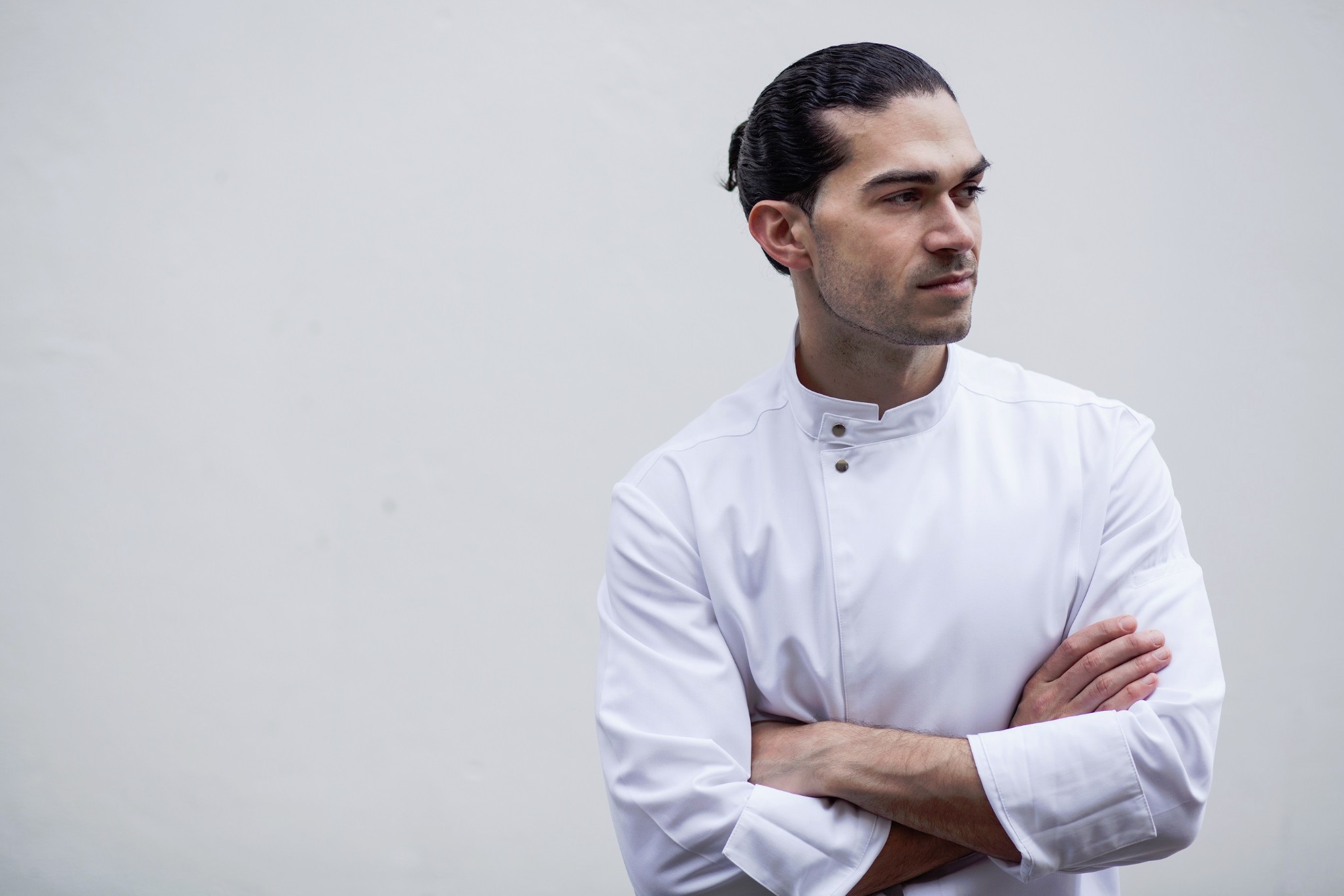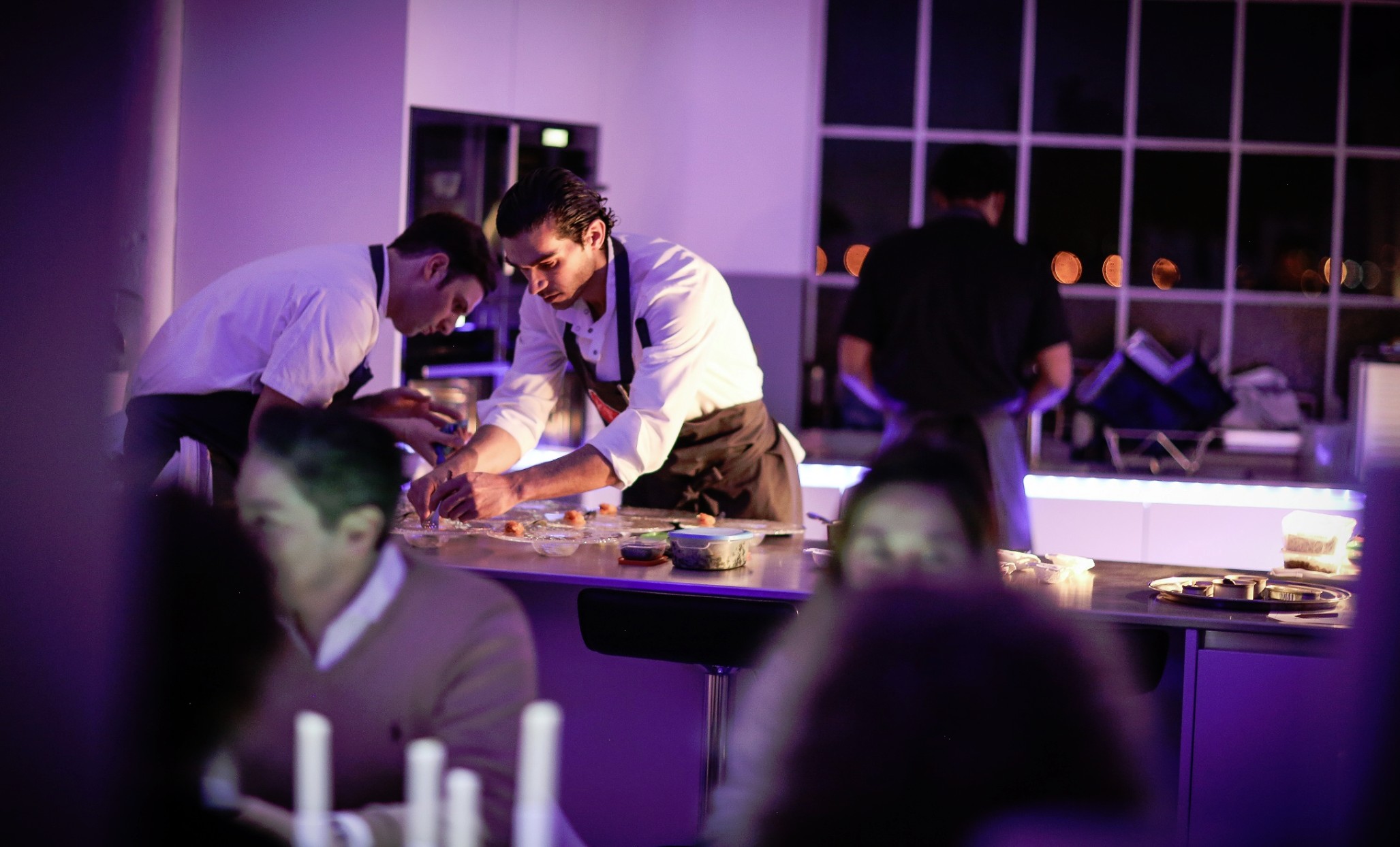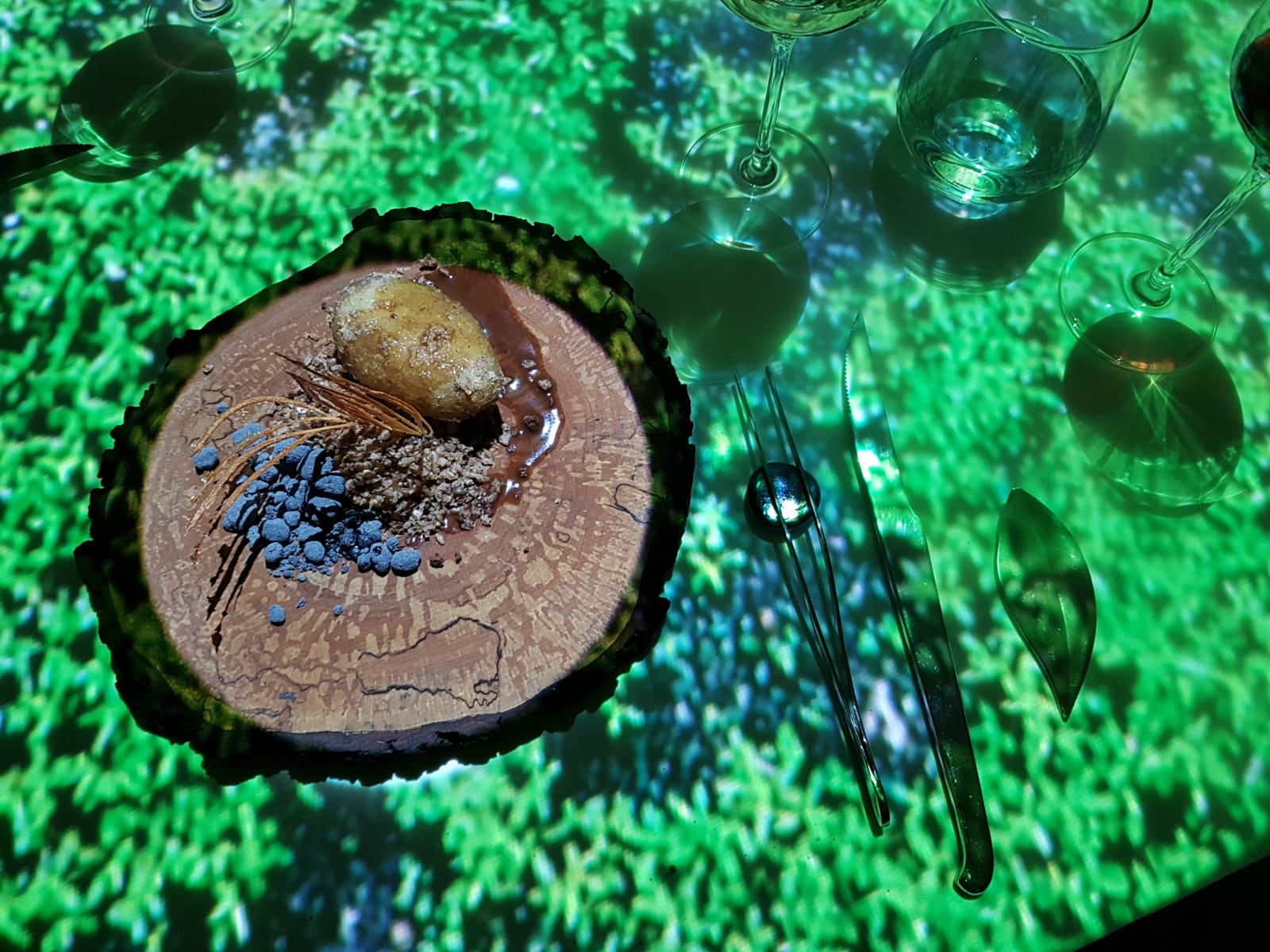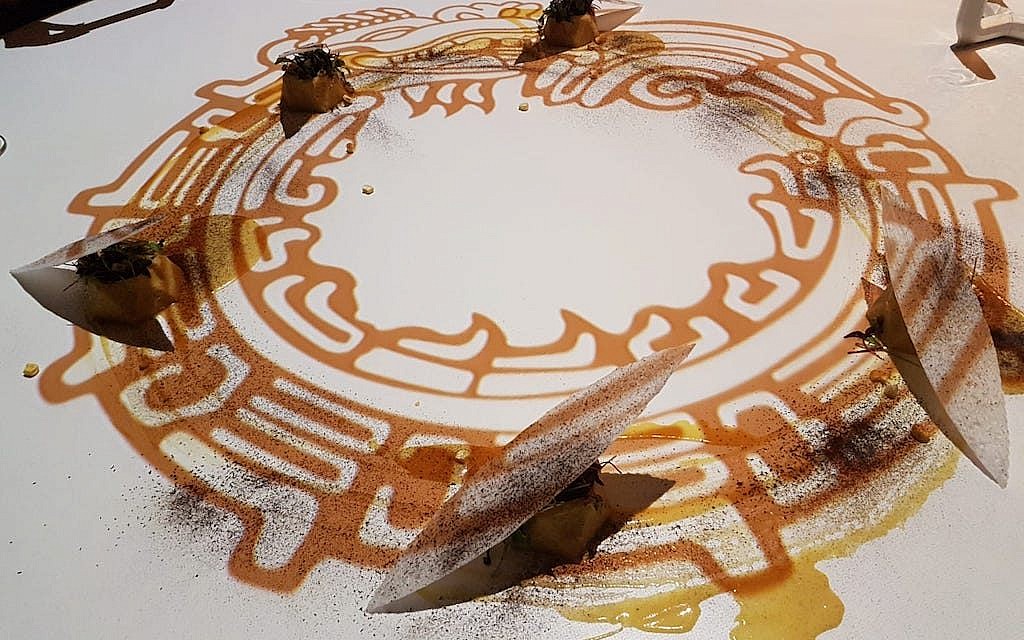Food for all the senses at Kitchen Theory
Alex Galbinski visits The Chef’s Table at Kitchen Theory and learns more about the science and creative processes behind the gastronomic multisensory experience
It is a truth universally acknowledged that Jews love their food. It is also fair to say that many members of the tribe like to drive when they dine out. But, if you get the chance to enjoy the 10-course tasting menu at Kitchen Theory, the car is definitely best left at home.
Down the road from Barnet’s town centre, in the lobby of an old Victorian warehouse, my husband and I made the acquaintance of our eight fellow diners – all of whom were foodies and interested in unusual gastronomic experiences.
We watched a video explaining the principles behind the Chef’s Table multisensory dining experience, which takes its inspiration from science, gastronomy, nature and art.
Get The Jewish News Daily Edition by email and never miss our top stories Free Sign Up
To further explain and test out this reasoning, chef Jozef Youssef –
who has worked at some of London’s top Michelin starred restaurants, establishing Kitchen Theory in 2010 – got us to taste some unusual nibbles, including a flavoured piece of paper, noting who was a ‘non-taster’ (this was apparently sometimes a good thing) and who was a ‘supertaster’.

Jozef has collaborated with experimental psychologist professor Charles Spence of Oxford University, who has carried out research proving the interrelation of all the senses. A case in point was when we tried a jelly bean while wearing a nose clamp and then with it removed; we surprised ourselves at how much all the senses inform our perception of flavour.
This was further illustrated with the colours of food; we were given identical looking nibbles with notably different tastes. In our second course, we appraised shape, texture, flavour and mouthfeel to evaluate whether the ox cheek encased in a pillowy doughnut or the octopus with
a blue corn tostada (we had a vegetarian option) was a ‘bouba’ or ‘kiki’ taste (these made-up words relate to a round or spiky shape).
Food was immaculately presented and, at times, served on the large oval table – somewhat dispensing with traditional table manners. Regular cutlery was not always used, in a thought-out effort to encourage mindful eating and challenge our preconceived ideas about food.
Quetzelcotal, the third course, named after a god represented as a feathered serpent in Mesoamerican culture, served up corn, beans and chilli in an elaborate honeycomb cell design, which we ate with our hands.
Images were projected onto the table to enhance the visual experience. During the course entitled Ryujin’s Servant (Ryujin was lord of the sea in ancient Japanese mythology), while we had the vegetarian option, one diner was surprised to find herself enjoying jellyfish – which Jozef explained should become more widely offered as a sustainable food source.
Served in delicate glass dishes, the course included fermented cucumber and seaweed, and projections turned the table into an ocean scene, with underwater sounds delivered through headphones. This concept of ‘sonic seasoning’ seeks to discover whether sound affects one’s sense of taste.

In Scriptura Vitae, the rich black risotto mimicked the work of artist and film-maker Aerosyn-Lex Mestrovic, whose video we had watched earlier, and was topped with a small golden-coloured square of chickpea tempeh.
Tsumikasa was an ‘earthy’ course and my favourite savoury one – New Jersey Royal potatoes with truffle and shallots served on tree trunk discs accompanied by a beautiful Valpolicella Ripasso. Accompanying the image projected onto the table were piped in sounds and smells of the forest.

Jastrow’s Bite, meanwhile, with the optical illusion of the rabbit depicted on the plate – or was it a duck? – emphasised the theory that flavour, like art, is a matter of perspective.
To translate fear, lightbulbs with working lights were smashed (Shattered Glass course) and their shards (sugar) placed atop our rhubarb ice cream served with white chocolate. Vanilla and the bee course served up torrija – a delicious and delicately sweet Spanish-style French toast – with honey kombucha, a drink made out of fermented tea.
Finally, the Sensploration course, consisting of Irish cream and cheesecake, sought to determine whether the type of glassware and feel (we were encouraged to feel a ‘texture cube’ while eating) used affects the perception of taste.
Individual portions were relatively small but well considered and, towards the end of the meal, we were feeling extremely full – some of the courses are considerably rich.
The cost isn’t cheap – £180 per person – but alcohol, which is paired with the food, is plentiful, and dining at Kitchen Theory is not your average Saturday night experience of eating out.
Alston Works, Unit 9A Falkland Rd, Barnet EN5 4LG

Thank you for helping to make Jewish News the leading source of news and opinion for the UK Jewish community. Today we're asking for your invaluable help to continue putting our community first in everything we do.
For as little as £5 a month you can help sustain the vital work we do in celebrating and standing up for Jewish life in Britain.
Jewish News holds our community together and keeps us connected. Like a synagogue, it’s where people turn to feel part of something bigger. It also proudly shows the rest of Britain the vibrancy and rich culture of modern Jewish life.
You can make a quick and easy one-off or monthly contribution of £5, £10, £20 or any other sum you’re comfortable with.
100% of your donation will help us continue celebrating our community, in all its dynamic diversity...
Engaging
Being a community platform means so much more than producing a newspaper and website. One of our proudest roles is media partnering with our invaluable charities to amplify the outstanding work they do to help us all.
Celebrating
There’s no shortage of oys in the world but Jewish News takes every opportunity to celebrate the joys too, through projects like Night of Heroes, 40 Under 40 and other compelling countdowns that make the community kvell with pride.
Pioneering
In the first collaboration between media outlets from different faiths, Jewish News worked with British Muslim TV and Church Times to produce a list of young activists leading the way on interfaith understanding.
Campaigning
Royal Mail issued a stamp honouring Holocaust hero Sir Nicholas Winton after a Jewish News campaign attracted more than 100,000 backers. Jewish Newsalso produces special editions of the paper highlighting pressing issues including mental health and Holocaust remembrance.
Easy access
In an age when news is readily accessible, Jewish News provides high-quality content free online and offline, removing any financial barriers to connecting people.
Voice of our community to wider society
The Jewish News team regularly appears on TV, radio and on the pages of the national press to comment on stories about the Jewish community. Easy access to the paper on the streets of London also means Jewish News provides an invaluable window into the community for the country at large.
We hope you agree all this is worth preserving.
-
By Brigit Grant
-
By Laurent Vaughan - Senior Associate (Bishop & Sewell Solicitors)
-
By Laurent Vaughan - Senior Associate (Bishop & Sewell Solicitors)
-
By Laurent Vaughan - Senior Associate (Bishop & Sewell Solicitors)
-
By Laurent Vaughan - Senior Associate (Bishop & Sewell Solicitors)






















